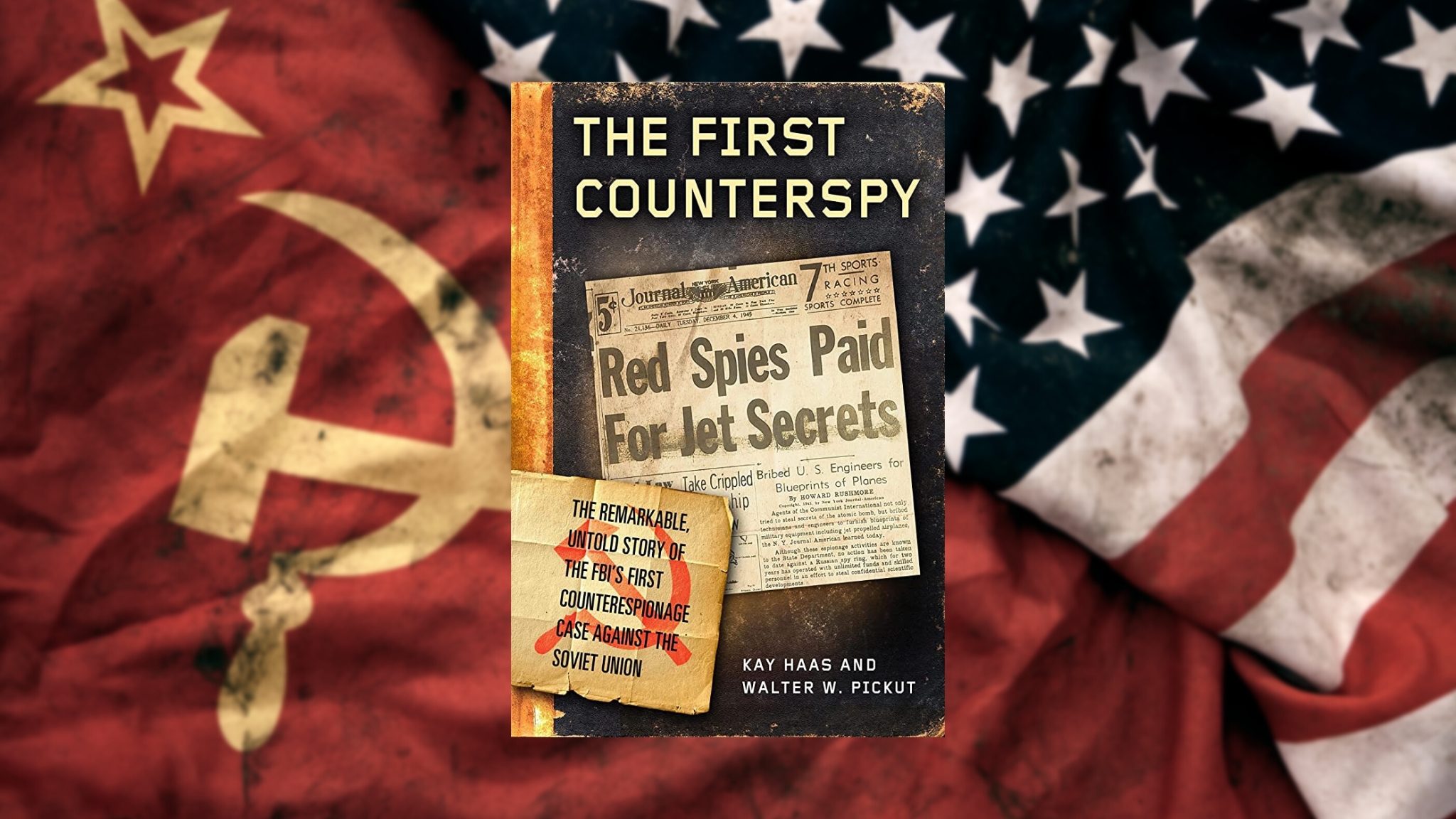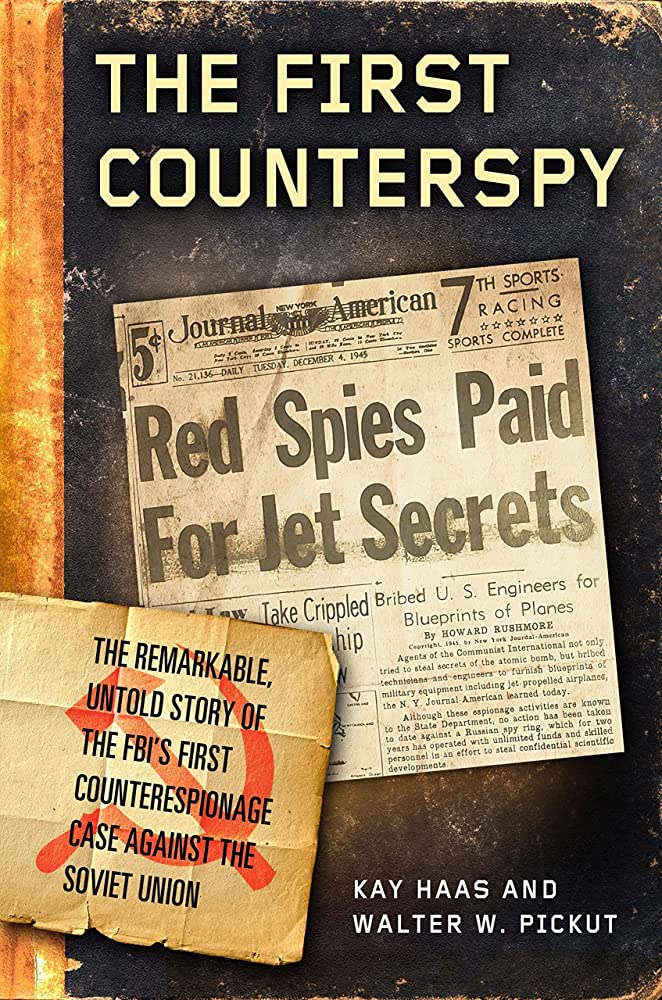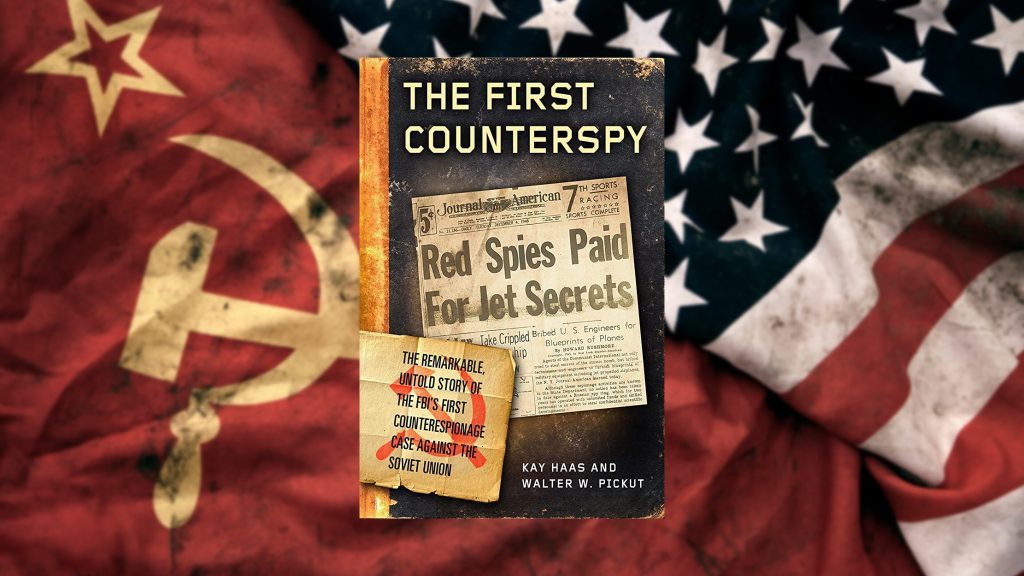
The First Counterspy by Kay Haas and Walter W. Pickut
What’s it About?
The pulse-quickening and traumatic story of spy, counterspy, and an American family unwittingly caught in its web.
During World War II, aviation engineer Larry Haas met Andrei Schevchenko, a Soviet purchasing agent at Bell Aircraft in Niagara Falls, New York. A “legal agent” there on business to purchase Bell’s warplanes for the Soviet Union’s fight against Germany, Schevchenko’s aims were far more duplicitous and would enmesh Haas (and his daughter) in a lifetime of intrigue and near misses.
For the first time ever, Haas’s story is told in The First Counterspy (Lyons Press) by Kay Haas (his daughter) and Walter W. Pickut.
Chasing Down a Soviet Mole
During World War II, the United States and the Soviet Union were allies, but Soviet espionage was alive and well within America’s military-industrial complex. Soviet spies canvassed a large network of informants not only for secrets about the atomic bomb, but also to attain the technology behind jet-propelled warplanes. At Bell, Schevchenko aggressively courted Bell’s leading aviation engineer, Haas, and Leona Franey, head librarian at Bell’s technical library, using tested techniques like “the long seduction” that used patience, flexibility and persuasion to woo his marks.
While Haas and Franey never succumbed to Schevchenko’s wiles and bribes, their previous social contacts with the Russian alerted the FBI to danger. Though still “only starting to develop effective counterespionage methods” in the 1940s, the bureau recruited their first-ever civilian counterspies and encouraged Haas and Franey to let themselves “be seduced” by Schevchenko to learn enough about him to undermine and destroy him.
For Haas, an adventurous spirit, the thrill of “conspiring with the FBI” and chasing down a Soviet mole promised an exhilarating ride, although in quieter moments he would wonder what he might have to become. As Kay Haas and Pickut describe in this gripping, novel-like telling of events, what Haas would do to protect America’s secrets was far beyond what he imagined.
Raising the Stakes
The intricate dance of spy versus spy ramps up as Haas pretends to agree to Schevchenko’s demands for top-secret information, feeding him articles and information the FBI deems harmless. Tensions rise between spy and counterspy as Schevchenko — a skilled and astute aviation engineer himself — pushes Haas for more and better information. In this sticky web, “each spider was now the other’s fly.”
It would take a toll on Haas’s conscience, as the authors relate:
Larry now knew that if he continued, he would one day betray this man who thought him a friend. Regardless of Andrei’s politics, he was still a man and Larry would take a hand in his destruction. It might be in an American prison or take place before a Soviet firing squad, but Larry would be an assassin … maybe even more frightening, if Andrei caught on, Larry might meet the world’s most efficient assassins himself.
And Andrei Schevchenko would indeed raise the stakes by targeting Larry’s daughter, Kay.
The book switches into and out of Kay’s point of view through her chilling memories of events that haunted her life. These included a kidnapping on her walk home from school where she was pushed out of a moving vehicle, which she survived. Even after the Schevchenko affair was concluded — somewhat mysteriously — her “experiences and conviction remain that Soviet agents used her as the fulcrum by which to force her father to open his network of influence and intelligence to them.”
One of the main contentions in The First Counterspy is that Kay’s experiences surviving abduction and assassination attempts from her father’s enemies form a part of this “saga” and adds new details to the FBI’s probes into the Communist International (Comintern) Apparatus.
Work of Memory and Research
The depth of research in The First Counterspy is extensive and impressive, with primary source material from the FBI and CIA vaults, as well as public and secret interrogation records of the House Un-American Activities Committee (HUAC). A major moment in the book cannot be verified by government authorities, however, for reasons which the authors make clear.
As Haas concludes his affairs with Schevchenko on an outbound ship — upon Washington’s orders — readers should come to their own conclusions as to what happened, since “Haas’s actions aboard the Stalinabad are not recorded in any known official documents in the United States or Russia.”
If true, the silence of the records hints at the uniquely delicate situation between the wartime “allies” during this time, despite the FBI’s repeated attempts to apprehend and prosecute the Soviet spy before his disappearance. A key contribution of the book is the additional light shed on the frictions between political leadership and FBI Director J. Edgar Hoover, who tackled the Schevchenko case as his “first, all-out anti-communist crusade,” though he and Haas would ultimately be thwarted by the White House who deemed the move to embarrass a wartime ally “unwise.”
The First Counterspy is a propulsive history of America’s first civilian counterspy and his family’s experience living in a world where “secret agents play by deadly rules.” An important effort of research and memory that reveals the “fatal flaws” in early Cold War espionage measures, countermeasures, and the recruitment and training of spies and counterspies, this is one book not to miss.
About the Authors:
Kay Haas is Larry Haas’s elder daughter. Her early years were fraught with disruptions caused by her father’s work and her mother’s death at the hands of Soviet agents. Kay later traveled widely and became a renowned and commercially successful stained-glass artist creating entire suites of church windows, elegant chandeliers, and decorative and artistic displays. She has raised five children over a span of twenty-five years, and at the age of 80 is married to her third husband, a retired pastor. She now lives in a secluded, forest village in rural New York State.
Walter Pickut is a freelance writer and the founding editor (now contributing editor) of the Jamestown Gazette, a Western New York and Northwest Pennsylvania regional weekly newspaper, now entering its tenth year of publication. He lives in Chautauqua County, New York, where he serves at the Martz-Kohl Astronomical Observatory to help fulfill their mission of research and public education about astronomy and space travel.

Publish Date: 5/1/2022
Genre: Historical, Nonfiction
Author: Kay Haas and Walter W. Pickut
Page Count: 392 pages
Publisher: Lyons Press
ISBN: 9781493061563

